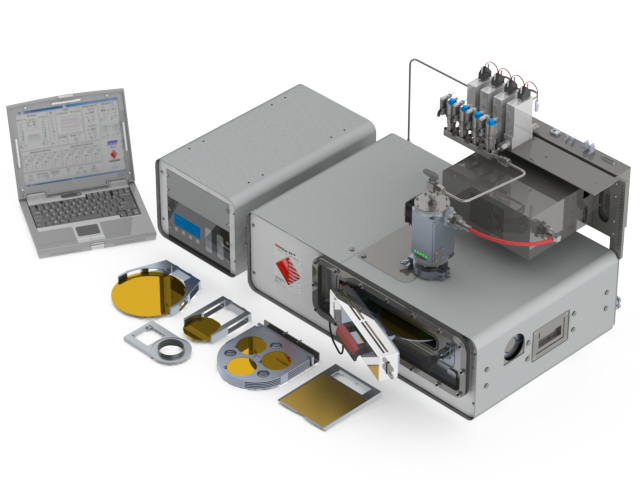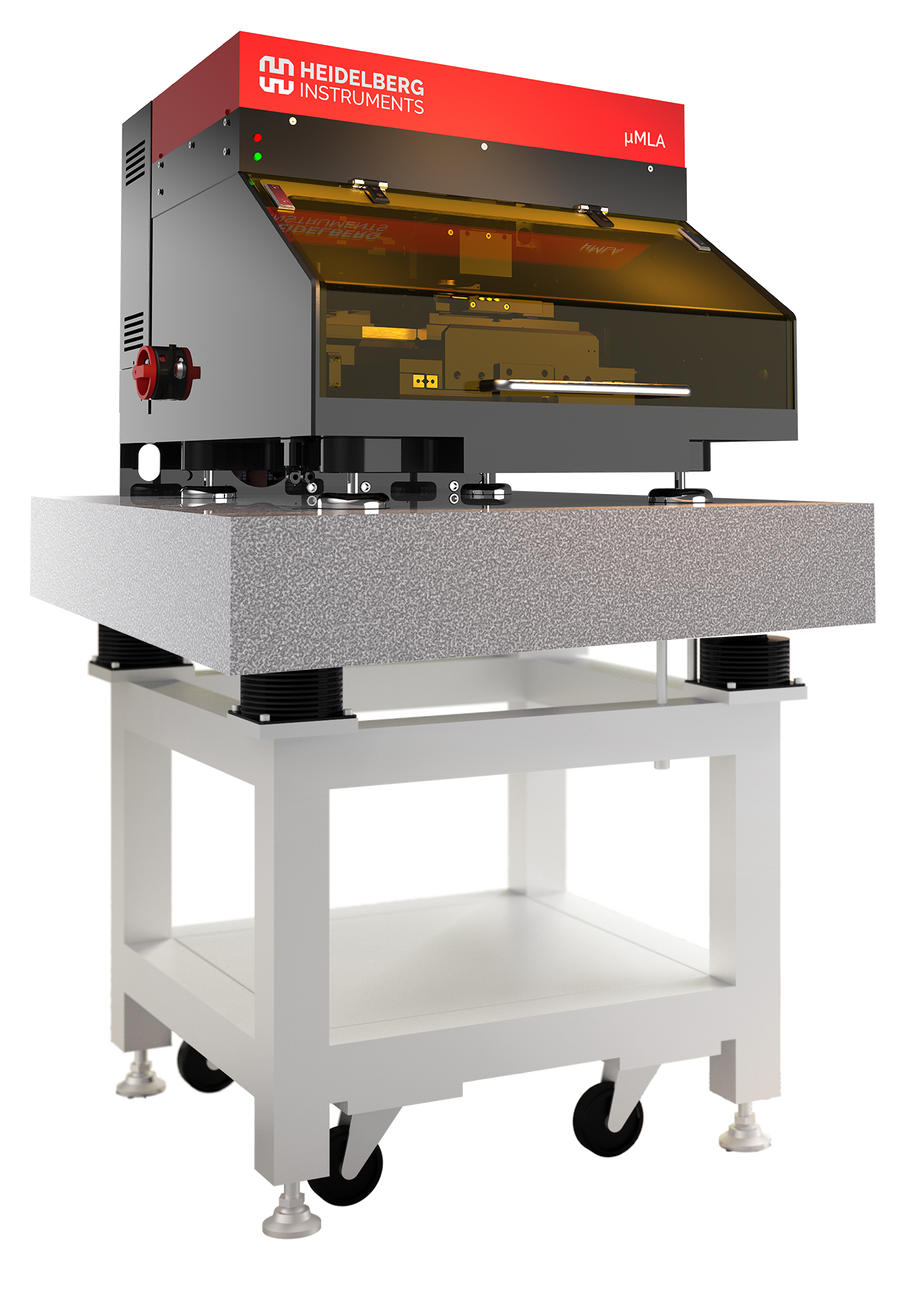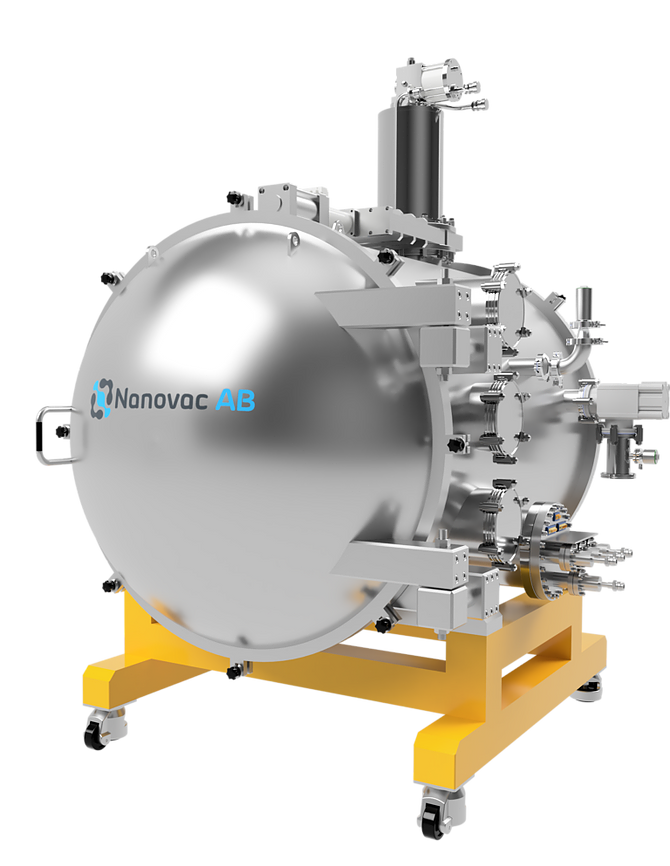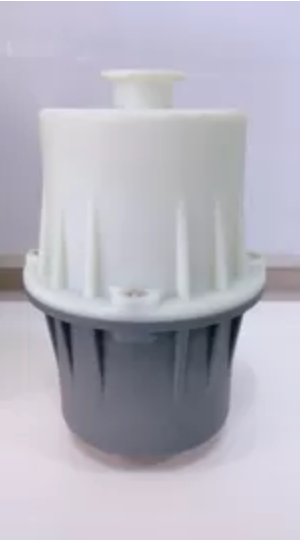PRODUCT SERIES - XF SERIES

A heat exchanger transfers heat between heat transfer fluid from a primary cooling circuit and fluid from the application to regulate process temperatures, without the fluids ever mixing together. The design of heat exchangers exposes fluids to a considerably larger surface area than other designs of heat exchanger, maximising the area available for thermal exchange to take place whilst keeping pressure drop to a minimum.
Where can a water-to-water heat exchanger be used?
Heat exchangers are usually a good option in situations where there is already a primary cooling circuit in place. Examples of primary cooling circuits include:
- Centralised chiller
- Centralised flatbed/dry cooler
- Centralised adiabatic cooler
- Cooling tower
- Tap water - Whilst almost infinite levels of cooling can be achieved by using tap water, it is terrible for the environment and for the billpayer.
How does a heat exchanger work?
Applied Thermal Control use plate heat exchangers in the design of the XF series. For more information on the construction of a plate heat exchanger, please refer to Appendix 1 at the end of this document.

How a plate heat exchanger works
By stacking multiple plates together and rotating the gasket to block either the left or right side, a channel is formed. This allows fluid to flow through alternating plates without mixing.

Fluid from the primary circuit will flow through channels 2, 4 and 6, and leave the heat exchanger at a higher temperature. Hot fluid from the application will flow through channels 1, 3 and 5, and exit the heat exchange at a cooler temperature. The hotter fluid is able to transfer some of its thermal energy across the plate into the cooler fluid.
The plates are pressed together, allowing the gaskets to form a seal. The corrugations of the adjacent plates create a tortuous path in which fluid is driven.
Heat exchangers from Applied Thermal Control are arranged in a single-pass configuration. Fluids are then able to then flow around the heat exchanger as shown below:

Fluid passes through the plates in counter-flow. This means that the heat transfer fluid from the primary circuit and hot fluid from the application flow in opposite directions. Counter-flow offers a higher thermal efficiency than parallel-flow.
What are the benefits of a heat exchanger?
Plate heat exchangers are quick and easy to clean

Periodic, onsite cleaning can be performed to flush out any contaminants to prevent fouling, and eventual reduction in heat transfer efficiency over time. Further information on fluid quality can be found below.
It is simple to adjust the cooling capacity of a heat exchanger.

Should the requirements of an application increase or decrease, it is possible to change the cooling capacity of the heat exchanger by exchanging the plate heat exchanger component for one with more or fewer plates. Reducing the number of plates will reduce the cooling capacity.
Plate heat exchangers are responsive.

Because the channel within which fluids flow is so narrow, only a small volume of fluid is contained in the heat exchanger at any one time. This allows temperatures to be readily controlled with a short lag time.
Plate heat exchangers are efficient

Due to the corrugations of the plates, and the narrow channels between them, a plate heat exchanger is able to recover up to 90% of the heat from process fluids.
Because of the absence of a refrigeration circuit or fans, heat exchangers have very low energy consumption.
Heat exchangers are not noisy

A fan is usually the noisiest component in process cooling equipment. The requirement for fans is removed from heat exchangers by transferring unwanted heat into the primary cooling circuit, rather than the environment. This means that heat exchangers operate quietly.
It is not necessary to upgrade air conditioning/ventilation in the building.

As heat exchangers do not eject heat into the surrounding environment, it is not necessary to upgrade the air conditioning and ventilation systems of the building in order to manage heat removed from applications.
Heat exchangers have a small footprint

The compact design of a plate heat exchanger, and redundancy of fans, means that heat exchangers are able to take up less space. The removal of a fan from the design of this process cooling equipment also allows space for additional controls to be added.
Heat Transfer Fluids
The XF Series from Applied Thermal Control is compatible for use with water, deionised water, oil and glycol.
Water
Water is readily available but can be dirty. Some applications are sensitive to particulates or may have small channel sizes making them prone to blockages. The closed circuits within a heat exchanger can help to protect the application.

Water has the potential for microbial contamination, the non-intended introduction of unwanted bacteria. Microbial contamination can lead to accelerated corrosion of the system, blockages, and reduced heat transfer. It is possible to introduce additives to eliminate microbial contamination. In the absence of such additives, Applied Thermal Control offer in-line UV decontamination as an optional control. The use of an in-line UV decontamination pack can prevent growth in the system by passing fluid through steel tubes containing a UV lamp.

Most house water systems run at sub-ambient temperatures. Some applications will require water to be delivered above dew point (the atmospheric temperature below which water droplets begin to condense), such as laser systems. In such cases, Applied Thermal Control offer an additional heater pack. Addition of a heater pack makes it possible to raise the operating range by 35ºC by mounting a heating element into the reservoir.
Generally, house water systems tend to be at lower pressures. To achieve cooling, higher-pressure applications require high back pressure. Heat exchangers allow higher pressure pumps to be installed, raising the pressure of the process circuit. Inversely, some applications are sensitive to higher pressures. In such cases, a bypass on the water circuit allows you to regulate pressure, ensuring protection of the application whilst still achieving the required flow rate and cooling. This is the case for all heat transfer fluids.
As demands on the primary cooling circuit change, variations in the pressure and flow of the circuit occur. An increase or decrease in demand by other systems on the primary cooling circuit can also cause spikes in temperature. Heat exchangers can help to manage this.
Deionised Water
Some applications are sensitive to electrical discharge or may require deionised water for other reasons.

A primary cooling circuit using deionised water is possible, but may be expensive, and there is a risk of microbial contamination within dead legs (pipework isolated from regular flow) of the system as additives cannot be used with deionised water.
It is important to note that when using deionised water, galvanic corrosion may occur if there are mixed materials in the circuit. Use of a heat exchanger allows a circuit of deionised water to be run to the application.

To ensure the quality of deionised water, it is possible to install in-line UV decontamination, as previously discussed. Applied Thermal Control also offer an inline deionising cartridge, which will polish water within the system. Addition of a conductivity sensor makes it possible to measure the purity of deionised water within the system by measuring resistivity and conductivity. It is possible to have this information relayed via volt-free contact or RS485.
Oil
Oil can offer an alternative to deionised water, offering electrical insulation at high operating temperatures. They are non-reactive, and do not mix with water.
Oil is a more viscous fluid and is able to operate at higher temperatures and pressures than water. This viscosity, however, means that oils are more challenging to work with.

When using oil as a heat transfer fluid, a positive displacement pump is required due to issues with viscosity. However, positive displacement pumps do not generally have enough flow for the requirements of a heat exchanger. Gear pumps can be used in replacement but are expensive and noisy.
Glycol

Glycol/water combinations are usually used for their antifreeze properties. Heat exchangers of this type rarely operate at temperatures where this would be of benefit.
However, glycol can be used in situations where microbial contamination is a concern as when prepared at the correct concentrations with water, both ethylene glycol and Hexid fluid (which is propylene glycol based) will help to inhibit the growth of most microbes.
The XF-Series from Applied Thermal Control

This range of floor-standing heat exchangers is designed for use with primary cooling circuits, providing cooling to applications for which the facilities water may be unsuitable for. Closed loop water to water heat exchangers from Applied Thermal Control utilise chilled house water to remove heat from the process coolant via a heat exchanger, providing an efficient way to cool without the need for an additional refrigeration circuit.
Heat exchangers in the XF series provide a barrier, protecting process coolants from potentially harmful cooling water that may contain contaminants. Units from Applied Thermal Control also overcome problems associated with insufficient pressure, fluctuating flow, or very cold water, by providing a stable supply of coolant to the process, regardless of house water condition, thus ensuring that the process remains at optimum performance.
Units in the XF range are self-contained systems with modulated primary supply, a water-to-water plate heat exchanger, coolant storage tank, and pump. A wide range of non-ferrous/stainless steel pumps with varying flows and pressures are available to suit requirement. Pumps are of positive displacement or centrifugal construction with fan-cooled electric motors, supplied in 304 & 316 stainless steel as standard.
Other features of the XF range include:
- Supplied complete with circuit breakers and on/off switches
- Coolant pump starting contactors
- Pump motor protection
- IP54 protection
- Temperature gauge
- Pressure gauge
- Coolant safety bypass
- Visual tank level indicator
- 24 V control circuit available
XF004
The XF004 is built into the K1 chiller enclosure, making it easily portable and small enough to fit under a laboratory bench. Designed to provide 4kW of cooling at 10ºC above the temperature of the primary water circuit the XF004 is ideally suited for most laboratory equipment, vacuum pumps and smaller laser systems.

Commonly requested options:
- High temperature pack, available to +75ºC
- Non-return solenoid valves
- High temperature water circuit without heater
- Low flow alarm
- Onboard RS485 data protocol
- Standard VFC set
- In-line deionising cartridge and fittings
- CPC quick release connectors
- Installation kit
- Flow meter pack output to RS485
- Seismic mounts
- In-line UV decontamination
- Qwikfoot kit
- Stainless enclosure
- De-branding of standard model
- External manifolds (2- to 10- way)
- Remote stop-start
- Auto refill
- Fluid adapters
- Pressure sensor
- Pressure sensor to RS485
- Conductivity sensor
- Conductivity sensor to RS485
- Inverter-driven pump
XF008
The XF008 is also built into the K1 enclosure. Designed to provide 8kW of cooling at 10ºC above the temperature of the primary water circuit the XF008 is ideal for use with larger laboratory or production equipment, vacuum pumps and cryocompressors, whilst still being portable and small enough to fit underneath a laboratory bench.

Commonly requested options:
- High temperature pack, available to +75ºC
- Non-return solenoid valves
- High temperature water circuit without heater
- Low flow alarm Onboard RS485 data protocol
- Standard VFC set
- In-line deionising cartridge and fittings
- CPC quick release connectors
- Installation kit
- Flow meter pack output to RS485
- Seismic mounts
- In-line UV decontamination
- Qwikfoot kit
- Stainless enclosure
- De-branding of standard model
- External manifolds (2- to 10- way)
- Remote stop-start
- Auto refill
- Fluid adapters
- Pressure sensor
- Pressure sensor to RS485
- Conductivity sensor
- Conductivity sensor to RS485
- Inverter-driven pump
XF015
The XF015 is available in two enclosure types, depending upon which pump option is required. The smaller footprint of the G02 allows you to save space, whilst use of the G04 enclosure allows for a wider range of pump options, including use of a centrifugal pump. The XF015 is well suited for use in both laboratory and production environments.

Commonly requested options:
- High temperature pack, available to +75ºC
- Non-return solenoid valves
- High temperature water circuit without heater
- Low flow alarm
- Onboard RS485 data protocol
- Standard VFC set
- In-line deionising cartridge and fittings
- CPC quick release connectors
- Installation kit
- Flow meter pack output to RS485
- Seismic mounts
- In-line UV decontamination
- Qwikfoot kit
- Stainless enclosure
- De-branding of standard model
- External manifolds (2- to 10- way)
- Remote stop-start
- Auto refill
- Fluid adapters
- Pressure sensor
- Pressure sensor to RS485
- Conductivity sensor
- Conductivity sensor to RS485
- Inverter-driven pump
XF025
The XF025 is built into the K6 enclosure to enable use with centrifugal pumps. This versatile enclosure has the room to allow for a wide range of additional options to be included, such as larger tanks and heater packs. The XF025 is available on castors, making it a portable piece of equipment commonly used with laser systems and ion sources. It can also be used for cooling multiple systems.

Commonly requested options:
- High temperature pack, available to +75ºC
- Non-return solenoid valves
- High temperature water circuit without heater
- Low flow alarm
- Onboard RS485 data protocol
- Standard VFC set
- In-line deionising cartridge and fittings
- CPC quick release connectors
- Installation kit
- Flow meter pack output to RS485
- Seismic mounts
- In-line UV decontamination
- Qwikfoot kit
- Stainless enclosure
- De-branding of standard model
- External manifolds (2- to 10- way)
- Remote stop-start
- Auto refill
- Fluid adapters
- Pressure sensor
- Pressure sensor to RS485
- Conductivity sensor
- Conductivity sensor to RS485
- Inverter-driven pump
XF050
The XF050 utilises a purpose built enclosure designed to house large centrifugal pumps and is ideally suited to cooling multiple systems that require isolation from the primary cooling circuit, for example cooling laser systems with deionised water from a primary glycol circuit. The XF050 is also ideal for server and data centre cooling.

Commonly requested options:
- High temperature pack, available to +75ºC
- Non-return solenoid valves
- High temperature water circuit without heater
- Low flow alarm
- Onboard RS485 data protocol
- Standard VFC set
- In-line deionising cartridge and fittings
- CPC quick release connectors
- Installation kit
- Flow meter pack output to RS485
- Seismic mounts
- In-line UV decontamination
- Qwikfoot kit
- Stainless enclosure
- De-branding of standard model
- External manifolds (2- to 10- way)
- Remote stop-start
- Auto refill
- Fluid adapters
- Pressure sensor
- Pressure sensor to RS485
- Conductivity sensor
- Conductivity sensor to RS485
- Inverter-driven pump
XF085
The XF085 utilises a purpose built enclosure designed for use with large centrifugal pumps and is capable of cooling multiple systems, and larger systems, for example cooling laser systems and hydrogen electrolysis. The XF085 is also well suited to cooling multiple systems that require isolation from the primary cooling circuit.

Commonly requested options:
- High temperature pack, available to +75ºC
- Non-return solenoid valves
- High temperature water circuit without heater
- Low flow alarm
- Onboard RS485 data protocol
- Standard VFC set
- In-line deionising cartridge and fittings
- CPC quick release connectors
- Installation kit
- Flow meter pack output to RS485
- Seismic mounts
- In-line UV decontamination
- Qwikfoot kit
- Stainless enclosure
- De-branding of standard model
- External manifolds (2- to 10- way)
- Remote stop-start
- Auto refill
- Fluid adapters
- Pressure sensor
- Pressure sensor to RS485
- Conductivity sensor
- Conductivity sensor to RS485
- Inverter-driven pump
XF120
The XF120 is built into a specifically designed enclosure allowing for the use of larger centrifugal pumps. It is ideally suited to cooling multiple systems, systems needing to be isolated from the primary cooling circuit, or large systems with multiple cooling pathways, for example UV curing systems and laser systems.

Commonly requested options:
- High temperature pack, available to +75ºC
- Non-return solenoid valves
- High temperature water circuit without heater
- Low flow alarm
- Onboard RS485 data protocol
- Standard VFC set
- In-line deionising cartridge and fittings
- CPC quick release connectors
- Installation kit
- Flow meter pack output to RS485
- Seismic mounts
- In-line UV decontamination
- Qwikfoot kit
- Stainless enclosure
- De-branding of standard model
- External manifolds (2- to 10- way)
- Remote stop-start
- Auto refill
- Fluid adapters
- Pressure sensor
- Pressure sensor to RS485
- Conductivity sensor
- Conductivity sensor to RS485
- Inverter-driven pump
XF200
The XF200 is housed within a purpose-built enclosure, designed for use with large centrifugal pumps. It is ideally suited to cooling systems that must be isolated from the primary cooling circuit, for cooling multiple systems, or for use with large systems with multiple cooling pathways. Examples of applications include UV curing systems, hydrogen electrolysis, and laser systems.

Commonly requested options:
- High temperature pack, available to +75ºC
- Non-return solenoid valves
- High temperature water circuit without heater
- Low flow alarm
- Onboard RS485 data protocol
- Standard VFC set
- In-line deionising cartridge and fittings
- CPC quick release connectors
- Installation kit
- Flow meter pack output to RS485
- Seismic mounts
- In-line UV decontamination
- Qwikfoot kit
- Stainless enclosure
- De-branding of standard model
- External manifolds (2- to 10- way)
- Remote stop-start
- Auto refill
- Fluid adapters
- Pressure sensor
- Pressure sensor to RS485
- Conductivity sensor
- Conductivity sensor to RS485
- Inverter-driven pump
Common Applications
Common Applications - XF004:
- Laser systems
- X-ray sources
- Vacuum pumps
- Resistance welding machines
- High frequency generators
- Furnaces
- Hydraulic systems
- RF generators
Common Applications - XF008:
- Laser systems
- Vacuum pumps
- Resistance welding
- High frequency generators
- Furnaces
- Hydraulic systems
- RF generators
Common Applications - XF008 and upwards:
- Additive manufacturing
- Cooling cryocompressors
- Vacuum systems
- Plasma etching
- Deposition systems
- PVD
- Microchip
Common Applications - XF025 and upwards:
-
Extruders

Common Applications - XF120 and up:
- UV curing for printing
- Fuel cells/hydrogen electrolysis
APPENDIX 1
HOW IS A PLATE HEAT EXCHANGER CONSTRUCTED?
A heat exchange transfers heat between heat transfer fluid from a primary cooling circuit and fluid from the application to regulate process temperatures, without fluids ever mixing.
Heat exchangers in both the XF and XR series from Applied Thermal Control use plate heat exchangers in their design.

The design of a plate heat exchanger exposes fluid to a considerably larger surface area than other designs of heat exchanger, maximising the area available for thermal exchange to take place whilst keeping pressure drop to a minimum.
Front and Back Cover
These are the end plates of the heat exchanger. They are very strong, usually made from a mild steel. The purpose of the front and back cover is to hold the plate heat exchanger together.
Inlets and Outlets
Here, the plate heat exchanger is connected to the primary cooling circuit and the process cooling circuit from the application, allowing fluids to enter and exit the heat exchanger.
Heat Exchanger Plate

The size of the heat exchanger plate can vary from a few square centimetres to a few square meters. They are mostly constructed from stainless steel, titanium, or aluminium. Heat exchanger plates are generally corrugated. This corrugation increases the heat exchange surface area, the rate of heat exchange, and the rigidity of the plates. The corrugations also create turbulence within the fluid, distributing heat evenly throughout. A smoother flow may allow heat to build in certain areas. Holes in each corner of the plate behave as inlets, allowing fluid to flow through the plates.

Gaskets

Gaskets are rubber seals attached to the front of the plate to ensure a tight seal is formed between the plates of the heat exchanger, preventing leaks or the two fluids from mixing.
The gasket is able to allow or prevent the flow of fluid into the cavities between two plates by using a diagonal seal to direct fluid as shown on the left. The gasket seals the holes on the left side of the plate, blocking fluid from entering the plate here. The holes on the right side of the plate are not sealed, allowing fluid to flow in and out of channels created between the plates.
Plates can then be stacked together, allowing fluid from the primary cooling circuit to flow through channels 2, 4 and 6, and leave the heat exchanger at a higher temperature. Fluid from the application will flow through channels 1, 3 and 5 and so on, and exit the heat exchanger at a cooler temperature.
Heat exchangers from Applied Thermal Control are arranged in a single-pass configuration. Fluids are then able to then flow around the heat exchanger as shown below:






